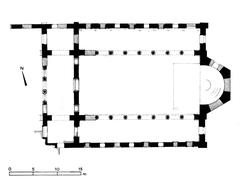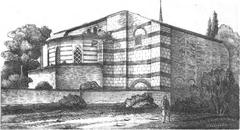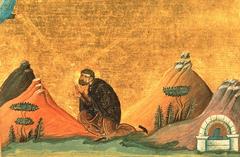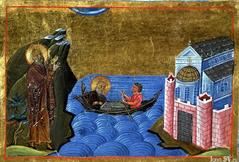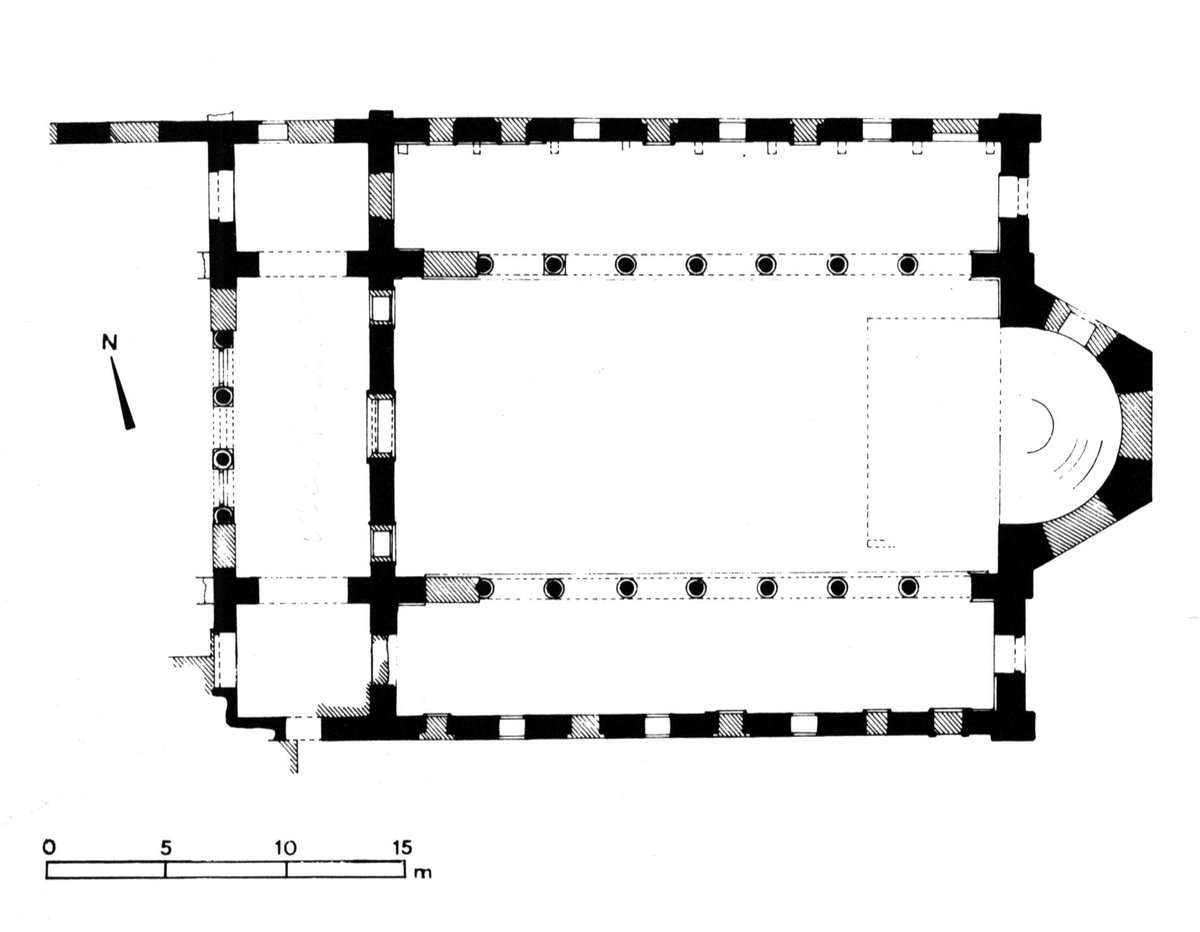
Monastery of Stoudios Istanbul: Visiting Hours, Tickets, and Travel Guide
Date: 14/06/2025
Introduction: The Monastery of Stoudios—A Pillar of Istanbul’s Heritage
The Monastery of Stoudios, known today as the İmrahor İlyas Bey Camii, stands as a profound testament to Istanbul’s layered spiritual and architectural history. Founded in 462 AD by the Roman senator Flavius Studius, it is the city’s oldest surviving religious structure—predating the Hagia Sophia. Its basilica-style design, grand marble columns, and ornate mosaics exemplify early Byzantine architecture, while its monastic community, the Studites, played a pivotal role in Byzantine religious life and manuscript preservation, especially during periods of turmoil such as the Iconoclast Controversy.
Over the centuries, the monastery endured earthquakes, fires, crusader attacks, and the transformation into a mosque during the Ottoman era. Yet, it has retained remarkable resilience, highlighted by a major restoration culminating in 2025. Today, it welcomes visitors eager to explore its intertwined Byzantine and Ottoman legacies. This guide details the monastery’s history, visitor information, and practical tips to help you make the most of your visit. For in-depth background and current updates, see resources like Quick Guide Istanbul, The Byzantine Legacy, and Kultur Envanteri.
Table of Contents
- Origins and Foundation
- Architectural Evolution and Features
- Religious and Cultural Significance
- Key Historical Events
- Restoration and Present-Day Status
- Visiting Stoudios Monastery: Practical Information
- Nearby Attractions
- Frequently Asked Questions (FAQ)
- Conclusion and Recommendations
- References
Origins and Foundation
The Monastery of Stoudios was established in the 5th century by Flavius Studius and dedicated to Saint John the Baptist. Situated in the Psamathia district (modern Koca Mustafa Paşa), it quickly became one of Constantinople’s premier religious and cultural centers (Quick Guide Istanbul). Its foundation marked the start of a long tradition of monastic scholarship and religious leadership in the Byzantine world.
Architectural Evolution and Features
Early Byzantine Basilica
The original structure followed a classic three-aisled basilica plan, featuring:
- A spacious nave with marble columns and Corinthian capitals
- Side aisles separated by stone arcades
- A narthex and porticoed atrium
- A single polygonal apse with a synthronon (clergy seating)
- Opus mixtum masonry (alternating stone and brick)
The interior boasted colorful opus sectile pavements and biblical reliefs, while clerestory windows filled the space with soft, colored light (The Byzantine Legacy; Origenes de Europa).
Later Additions and Ottoman Conversion
Following the Ottoman conquest, the church was converted into the İmrahor Mosque. A mihrab and minaret were added, and interior Christian iconography was removed. Despite these changes, much of the Byzantine architectural core survived (Istanbul Clues).
Restoration Highlights (2023–2025)
The most recent restoration stabilized the basilica’s remains, preserved surviving mosaics and pavements, and added modern amenities for both worshippers and tourists (Kultur Envanteri). The focus was on safeguarding the site’s Byzantine and Ottoman features while ensuring structural integrity.
Religious and Cultural Significance
The Studite Rule and Intellectual Legacy
The monastery’s Studite monks followed a strict monastic code emphasizing communal living, rigorous prayer, and manual labor. The scriptorium became a renowned center for manuscript copying and religious scholarship (Origenes de Europa). The Studite Rule influenced monastic life throughout Byzantium and beyond, including on Mount Athos.
Center of Resistance and Reform
During the Iconoclast Controversy, Stoudios was a bastion for defenders of icon veneration. Its monks faced exile and martyrdom for their beliefs, shaping Orthodox doctrine (Istanbul Clues).
Key Historical Events
- Iconoclasm: The monastery was a center of iconophile resistance in the 8th–9th centuries.
- The Fourth Crusade (1204): The site was sacked and the community dispersed (Quick Guide Istanbul).
- Ottoman Conquest (1453): Transformed into a mosque under Sultan Bayezid II (Istanbul Clues).
- Earthquakes and Fires: Major earthquakes in 1766 and 1894, and fires in 1782 and the early 20th century, caused significant damage. The roof collapsed in 1908 (Greek Reporter).
Restoration and Present-Day Status (2025)
After decades of neglect, a comprehensive restoration was completed in 2025. The basilica is now stabilized and functions as the İmrahor Mosque, with regular worship and visitor access during non-prayer hours (Kultur Envanteri). The restoration prioritized conserving the site’s Byzantine artistry and Ottoman features, while adding necessary amenities.
Ongoing challenges include environmental threats and the need for continuous conservation (Origenes de Europa).
Visiting Stoudios Monastery: Practical Information
- Location: İmrahor neighborhood, southwest of Istanbul’s historic peninsula, near the Golden Gate and the Marmara Sea (FinalRentals).
- Visiting Hours: Open to visitors outside of the five daily Muslim prayer times. Confirm hours with the mosque administration or local tourism resources (Kultur Envanteri).
- Entrance Fee: Free of charge for all visitors.
- Dress Code: Modest clothing is required. Women should cover their heads; shoes must be removed before entering the prayer hall.
- Accessibility: The site’s uneven terrain limits access for those with mobility challenges.
- Guided Tours: Available through local operators; booking in advance is recommended for in-depth historical insights (FinalRentals).
- Facilities: Basic amenities only; no cafés or souvenir shops onsite.
- Photography: Permitted outside prayer times.
Nearby Attractions
Combining a visit to Stoudios with nearby landmarks offers a richer perspective on Istanbul’s history:
- The Golden Gate (Yedikule Fortress): Impressive Roman-era fortifications.
- Chora Church (Kariye Museum): Celebrated for its Byzantine mosaics and frescoes.
- Hagia Sophia: Istanbul’s most iconic Byzantine structure.
Frequently Asked Questions (FAQ)
Q: What are the Monastery of Stoudios visiting hours?
A: The site is open to visitors outside of Muslim prayer times; hours may vary, so check locally before your visit.
Q: Is there an entrance fee?
A: No, entry is free.
Q: Are guided tours available?
A: Yes, guided tours can be arranged through local providers.
Q: Is the site accessible to those with disabilities?
A: The uneven, historic terrain poses challenges for visitors with mobility impairments.
Q: Can I take photographs?
A: Yes, but not during prayer times, and always respect religious observances.
Conclusion and Recommendations
The Monastery of Stoudios embodies Istanbul’s rich tapestry of Byzantine spirituality and Ottoman tradition. Its architectural splendor, scholarly legacy, and resilience in the face of adversity make it a must-see for history enthusiasts and travelers seeking deeper insight into the city’s past. With its recent restoration and reopening as the İmrahor Mosque, visitors now have the opportunity to engage with a monument that has shaped religious and cultural traditions for over 1,500 years.
To plan your visit, stay updated on current hours and access via official local resources. For a more enriching experience, book a guided tour and explore nearby historical attractions. Enhance your journey with the Audiala app for curated audio guides, interactive maps, and up-to-date visitor information.
Explore the Monastery of Stoudios and connect with Istanbul’s enduring legacy.
References & Further Information
- Quick Guide Istanbul – Stoudios Monastery
- The Byzantine Legacy – Monastery of Stoudios
- Istanbul Clues – Stoudios Monastery
- Turkiye Today – Imrahor Ilyas Bey Mosque Restoration
- Kultur Envanteri – İmrahor Camii
- Origenes de Europa – Monastery of Stoudios
- Daily Sabah – Restoration News
- Greek Reporter – Monastery in Ruins
